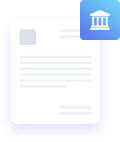Drug Trafficking Laws And Penalties Criminology Essay
Drug trafficking laws and penalties should be stricter worldwide because drug use and overdose is becoming more prevalent throughout the world and is destroying the lives of innocent people, especially teens. The effects of drug use and drug trafficking damage our global economy, affects the youth of the word, and spurs violence amongst people. The world must join together to stop drug traffickers from transporting illegal substances all over the world.
Economic costs that are related to substance abuse and drug trafficking are extremely high. Drug trafficking cartels can become powerful enough to corrupt a country. The UN Drug Control Program has noted the difficulty of maintaining an honest and democratic government while fighting a drug war when they said: “In systems where a member of the legislature or judiciary, earning only a modest income, can easily gain the equivalent of some 20 months’ salary from a trafficker by making one “favorable” decision, the dangers of corruption are obvious” [United Nations International Drug Control Program]. When a drug trafficking organization gains enough money, they begin to bribe local officials and destroy countries. As the Un Drug Report said, “People are easily bribed when they are able to make an equivalent of a 20 month salary in a few days [United Nations International Drug Control Program].” Once a drug cartel corrupts one official, it becomes a chain reaction of corruption. Eventually a drug cartel can grow enough to control a country as a whole.
Pablo Escobar and his drug cartel are a great example of this corruption. During the 1980s, Escobar became known internationally as the Medellin Cartel gained notoriety. During Escobar’s era, he and his Medellin Cartel were said to have controlled about 80 percent of the drug shipments that entered illegally to the United States, Mexico, Puerto Rico, and the Dominican Republic. Most of his drug plantations were located throughout Colombia, Peru, and Bolivia because Colombian cocaine was considered to be of the highest quality. Escobar’s business and products spread across North and South America, and small parts of Asia as well.
Escobar bribed and corrupted countless Colombian government officials, judges and other politicians with execution as his main punishment for not agreeing to his bribes. Escobar’s cruel ways resulted in hundreds of deaths for people that did not comply with his demands. His strategy was referred to as “Plata o Plomo”; Spanish for “silver or lead”, which was intended to mean “accept a bribe or face assassination.” Escobar seized control of all of Colombia and used his power to grow his drug empire [The Medellin Traveler].
Drug Trafficking affects the global economy through health care and welfare costs as well. Drug use can cause HIV and other illnesses amongst people. When drug addicts shoot heroin and other drugs into themselves they do not use sanitary needles and most addicts share needles with others. If one drug user was previously infected with HIV and uses a needle to do drugs. That needle has infected blood on it and when another user uses that same needle, he becomes infected as well. Most drug addicts end up in the hospital and the cost of their treatment is very expensive.
Most drug addicts are very poor because they spend most if not all of their money on drugs and alcohol. A large amount of drug addicts are on welfare and are given food stamps and places to live. The costs of providing drug addicts with food and shelters are very expensive as well. Most of these drug addicts do not stop using because they are too addicted.
Then there are the recovering drug addicts of the world that create large costs to the economy as well. As I mentioned, most drug addicts are very poor and if they do try to recover, they have to go to treatment centers. The government usually pays these treatment centers for the recovering drug addicts that they treat. Some drug addicts eventually are cured and are then able to word and contribute to the growth of our economy. But, there are millions of drug addicts that leave treatment centers only to come back to them in a few months for the same reasons.
Drugs also create productivity losses including deaths, victimization, incarceration, and crime careers. This means that there could have been more people working and stimulating the economy that have been either killed or incarcerated because of their involvement with drugs.
A study prepared by The Lewin Group for the National Institute on Drug Abuse and the National Institute on Alcohol Abuse and Alcoholism estimated the total economic cost of alcohol and drug abuse to be $245.7 billion for 1992 in the United States. The Lewin Group also estimated that 40% or $97.7 billion of that was due to drug abuse. The costs of treatment and prevention as well as other healthcare costs, job productivity, lost earnings and welfare were also included in this number [National Institute on Drug Abuse]. These costs were paid for by the millions of tax payers of the United States that worked hard and did not get involved with drugs.
Drug trafficking and abuse is very prevalent among the youth of world. According to the Office of Juvenile Justice and Delinquency Prevention, “young people who persistently abuse substances often experience an array of problems, including academic difficulties, health-related problems (including mental health), poor peer relationships, and involvement with the juvenile justice system” [Office of Juvenile Justice and Delinquency Prevention]. Additionally, there are consequences for family members, the community, and the entire society. Usually adolescents that use or are involved with drugs often disengage from school and community activities. Drugs deprive students’ peers and communities of the positive contributions that they might have. These students stop playing sports and do not join extra-curricular activities. There are countless teenagers across the world that have so much talent that is wasted because of drug use. Some kids might have potential to be superstars in sports and clubs but because of drugs they cannot do so.
Substance-abusing youth are at a higher risk for mental and physical problems than nonusers. Youth who abuse drugs are prone to many problems including depression, conduct problems, suicidal thoughts, attempted suicide, and suicide. Most kids who begin using drugs become outcasts in schools and do not have many friends. Because of this, they use drugs even more to ease their pain. This causes thousands of suicides and overdoses throughout the world.
Drug use is becoming more and more prevalent in very young children as well as well as youth in high school. The percentage of 8th graders reporting lifetime use of any illicit drug declined from 20.9% to 19% from 2006 to 2007. Although the percentage of use has declined, 19% of 8th graders are still a tremendous amount of 13 and 14 year olds using illicit drugs. While the amount of 8th graders doing drugs went down, the amount of 12th graders using drugs has increased. In 2007, 15.4% of 12th graders reported using a prescription drug without a prescription within the past year. Between 2005 and 2007, past year abuse of Ecstasy increased among 12th graders from 3.0% to 4.5%, which makes a 50% change in just two years. Also between 2004 and 2007 abuse of Ecstasy increased among 10th graders from 2.4% to 3.5% [U.S Drug Enforcement Administration].
Aside from personal adversities, the abuse of drugs by youth can jeopardize many other aspects of life for youth, especially family life. Sometimes drug abuse can result in family dysfunction where families do not communicate and sometimes stop living with each other. Substance abuse can also drain a family’s financial and emotional resources. Arrests and interventions by the juvenile justice system are eventual consequences for many of the youth that are involved with drug use. This can place unnecessary stress on families causing them to shift apart from each other. Having to constantly worry about your child’s safety and security is hard for anyone, especially parents whose children are involved with drugs.
“The International Narcotics Control Board has urged an international collaboration to stamp out internet trafficking of narcotic drugs and psychotropic substances around the world,” wrote Rohit Sharma in her article about drug trafficking [Sharma, Rohit]. Internet Drug trafficking is becoming much more popular throughout illegal drug organizations. It seems to be safer and more profitable than physically selling drugs. Internet Trafficking also allows these organizations to sell drugs all over the world from one single warehouse or destination.
Two internet pharmacies in Bangkok and one in Chiang Mai, Thailand, mainly serving the US market, were closed down between November 1999 and January 2000 after raids by Thai authorities with the close collaboration of US Drug Enforcement Administration. These pharmacies were sending parcels of drugs to US citizens, including many drug addicts, who could not get their prescription from US doctors [Sharma, Rohit]. Since then, millions of pharmacies like these have opened and are constantly selling drugs to people all over the world. The UN should create a new taskforce designed solely for tracking down drug sales over the internet. They can stop these pharmacies by ordering drugs with fake names and addresses so that they can shut down these illegal pharmacies.
Other than internet trafficking, many countries have increased their efforts to stop physical drug trafficking by strengthening borders, arresting drug cartels and destroying crops. The International Narcotics Control Strategy Report says, “Efforts to restrain the activities of global drug trafficking and money laundering operations gained ground, even in the face of war, corruption, insurgency and economic disruption.” Here are some examples of what some countries have done:
President Obama and his administration have designed a new plan with the Government of Mexico to stop the transportation of drugs across our borders [Homeland Security].
“In Colombia, the Colombian police destroyed more than 124,000 hectares of coca crops in 2003, a third record year for eradication”, said Assistant Secretary for International Narcotics and Law Enforcement Affairs Robert Charles [Porter, Charlene].
Germany hosted a seminar for Drug Trafficking on Jan. 29, 2010. There were 91 participants from 61 countries. The seminar examined how terrorists can use narcotics profits to fund terrorist activities and how they can make countries corrupt. All of the participants conversed with each other on a strategy to help stop international drug trafficking [Tudor, Jason].
Although some countries have done a lot to stop drug trafficking, West Africa is a country in need of major help. The United Nations Office on Drugs and Crime estimates at least 50 tons of cocaine transits through West Africa annually. The availability of narcotics to the public in the region is increasing as well because traffickers pay transportation cost with drugs instead of money. The UN needs to help West Africa in the global war against drugs because it has been a crucial area for drug traffickers to transport drugs from. West Africa is a notably poor country and barely has enough money to support itself let alone stop drug trafficking. Over the past several years, an estimated $2 billion of cocaine was transported from Latin America to Europe via West Africa. More money and Drug task forces should be sent and activated in West Africa to stop this area from being the massive drug transport area that it is [Kruzel, John].
The United States has done a lot to stop drug trafficking throughout the US as well as the rest of the world. The HIDTA (High Intensity Drug Trafficking Areas) Program is the main government run program that works to stop drug trafficking across America. They have about 30 headquarters around the country and use different strategies to stop drug trafficking depending on the region in which they are located. One of the greatest examples of their work has been in Philadelphia, PA and Camden NJ. Being that Philadelphia and Camden are very close to New York City, they have become one of the busiest illegal drug transit routes on the eastern seaboard. There are major interstate rail and highway systems along with a major airport that have become the key shipping terminals for illegal drugs in the region.
The Philadelphia/ Camden HIDTA division has setup a total of 11 squads in Philadelphia to reduce the amount of drug trafficking to and from the city. The Regional Investigative Support Center was made successful by assigning full-time Philadelphia Police Department officers and supervisors manning the Watch Center, 8:00 AM-10:00PM, Monday through Friday. The HIDTA also works with Internal Revenue Service which provides the HIDTA with financial information on people being investigated and reports suspicious activity to the HIDTA as well. Lastly, field drug identification training is currently offered to the newly assigned Philadelphia police officers to teach how to distinguish people who are under the influence with people who are sober. Since the establishing of the program in 1995, the Philadelphia / Camden HIDTA have decreased the flow of drug trafficking by 30% until now [Office of National Drug Control Policy].
“Drug trafficking cartels spread violence and lawlessness throughout our border region and reach into all of our communities, large and small,” said Attorney General Eric H. Holder. Drug dealers create violence because they have their own wars with each for profits. During these wars, innocent people are put at risk because of the constant shootouts and gun fights that happen. Two ongoing gang wars over drug markets in Chicago accounted for more than 100 homicides during 1987-1994. This total represents 11% of all gang-related homicides in Chicago in that time span [Howell, James].
Los Angeles, California is one of the most dangerous cities in the United States. Los Angeles is also known for the two major gangs that are constantly at war throughout the city. The Bloods and the Crips are one of the two most dangerous gangs in America. The profits from each of these gangs come from their drug trafficking and selling. With these profits they buy weapons which then create more violence and catastrophes across the state.
Drug trafficking and gang violence go hand in hand with each other around the United States. Where there are gangs, there is drug trade and vice versa. I believe that if we eliminate drugs in this country, we eliminate gang violence once and for all. Drug Trafficking is causing gangs to spread all over the U.S and put more and more towns in danger of gang violence [Howell, James].
Drug trafficking efforts have to drastically increase throughout the world and the United States. Although a lot is being done, there has to be more done if we ever want to stop the horrors of drug trafficking. The affects of drugs destroy our economies and our youth. They do nothing but bring violence and mayhem to the world.















